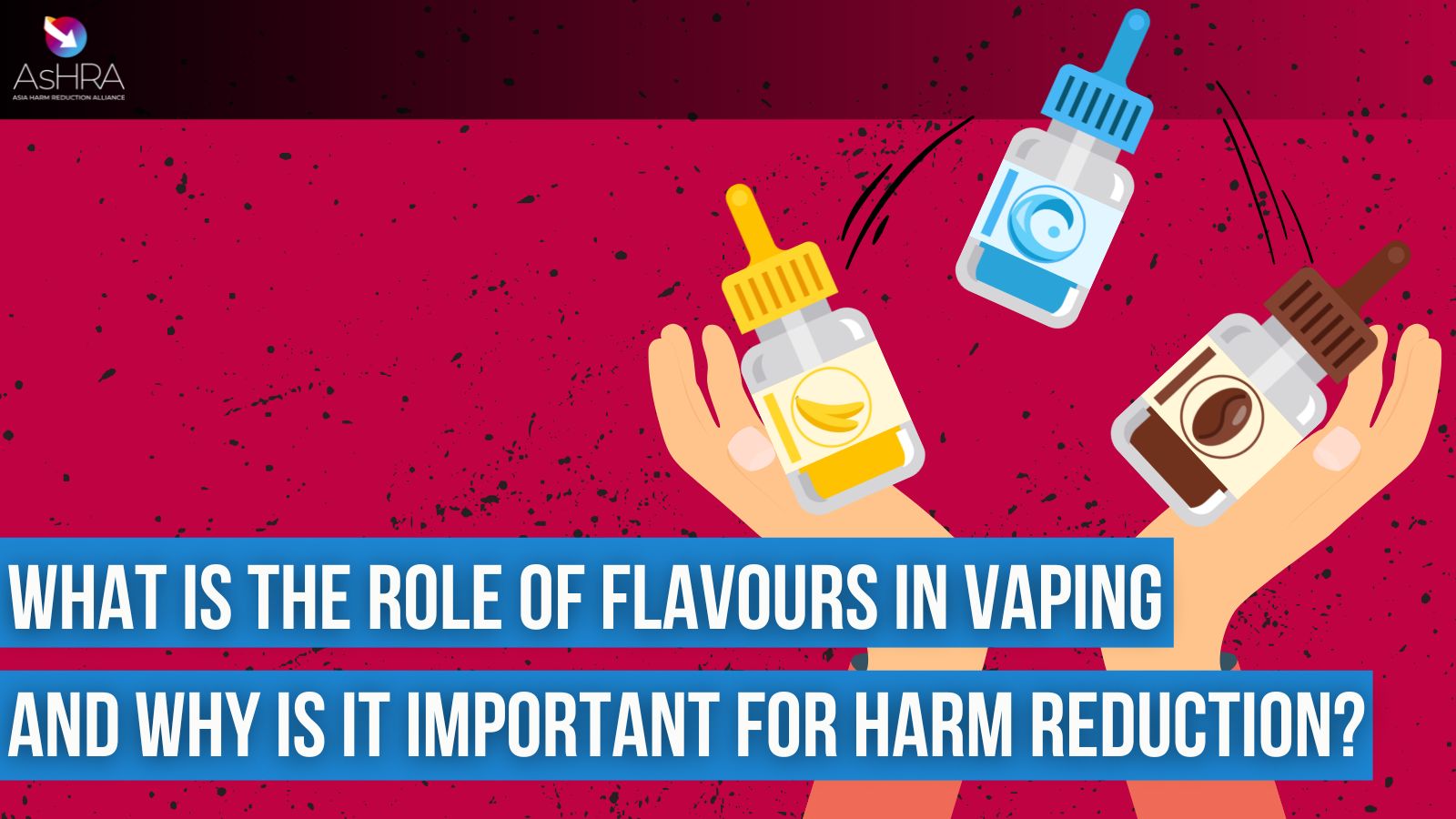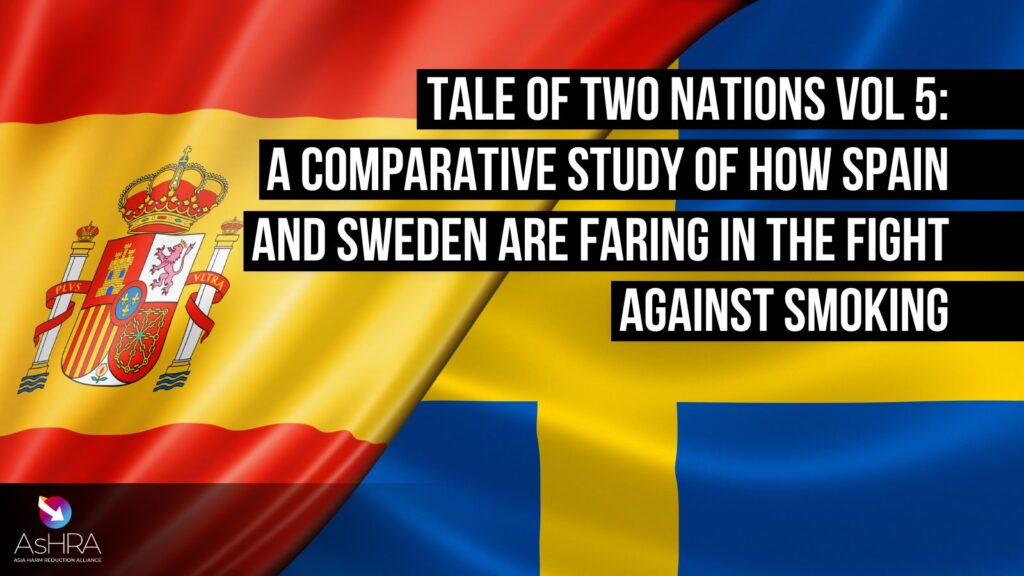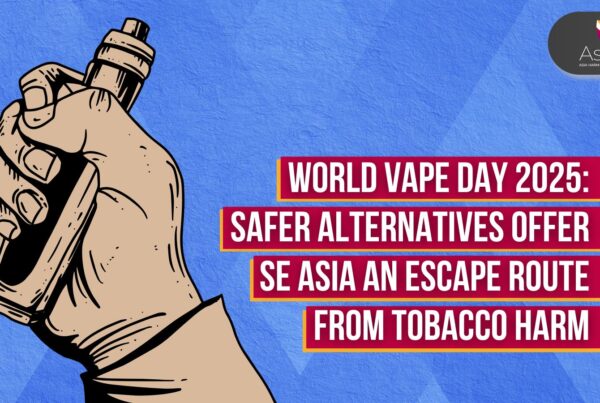How misunderstanding and misinformation causes roadblocks for harm reduction
When discussing harm-reduction products and nicotine alternatives, many countries around the world have recently been paying more attention to the role of flavours in vaping – for better or for worse. The benefit of this scrutiny lies in the potential for more effective and accepting harm-reduction policies that embrace and encourage the critical role of flavours in helping smokers quit. However, in reality, misinformation and misunderstandings surrounding vaping in general and flavours in particular – such as the role of diacetyl and the risk of popcorn lung – have resulted in restrictions or bans on the inclusion of flavours in vapes.
This article utilises a particularly relevant report by public health expert Dr Konstantinos Farsalinos, “The Case for Flavours in Tobacco Harm Reduction To Save Lives,” to understand how flavours are used in vaping, their benefits, how they are monitored, and how governments can both embrace and regulate their presence.
What is the role of flavours in vaping?
As the liquids used in electronic cigarettes have no flavour on their own, adding flavour becomes a critical element of the vaping experience. Dr Farsalinos’ report shares that only 1% of vapers consumed “flavourless liquids” and that many even used multiple flavours within or across days.

The various flavours include fruit (such as orange, peach or watermelon), dessert (such as ice cream or apple pie), candy, coffee and more. Most of these flavourings fall into three main categories – natural, natural-identical and artificial.
What is the proven benefit of flavours in tobacco harm reduction?
According to the report, the presence of flavours in harm-reduced alternatives contributes to the initiation and continued use of these products by former smokers as they, for example, show a marked preference for flavoured e-cigarettes. This, in turn, reduces their dependence on combustible tobacco and, therefore, reduces their risk of diseases that come from smoking cigarettes. This is not only an individual benefit but also a public health benefit.
Given this correlation, harm reduction experts fear that restricting or banning flavours encourages former smokers to return to smoking, thereby contributing to a higher risk to their health.
What are the risks of flavours, and how are they monitored?
Most flavour-associated risks emerge from unregulated products or black markets. This is because, when legalised and regulated, flavours are required to be food-grade and certified by organisations such as the FDA, EFSA or other country-based equivalents. In fact, flavourings have been monitored in the US since 1959. When flavoured alternatives are restricted or banned that unregulated and dangerous versions emerge in underground markets.
Despite this reality, misinformation about flavourings is often used as a reason for their ban – such as the discussions surrounding diacetyl. The presence of diacetyl in a high quantity has been associated with bronchiolitis obliterans, or popcorn lung, among workers in a popcorn factory. This has resulted in fear around the use of diacetyl in some flavourings. However, “no such case has been identified until now among millions of users” of electronic cigarettes – the conditions of which are not comparable to occupational exposure. The much lower quantity of diacetyl found in e-cigarettes further reduces risk.
What can governments do to adopt a risk-proportionate policy?
Even when addressing diacetyl, governments must adopt a risk-proportionate policy approach that ensures product quality, restricts youth access and implements safeguards while maintaining flavour options. Governments can also support public health by promoting more scientific research on flavourings and harm reduction to proportionately care for current and former smokers alongside the youth. Rather than blanket bans and severe restrictions without consideration for the benefits of harm reduction, it is up to governments to adopt a more nuanced approach to address tobacco harm constructively.
Related Posts
 Time to support Filipino vape law, not relitigate it
Time to support Filipino vape law, not relitigate it
Time to support Filipino vape law, not relitigate it
 Greens’ Plan To Legalise Nicotine Vapes Lauded
Greens’ Plan To Legalise Nicotine Vapes Lauded
Greens’ Plan To Legalise Nicotine Vapes Lauded
 Taiwan Vaping Ban Disappointing For Its Many Smokers
Taiwan Vaping Ban Disappointing For Its Many Smokers
Taiwan Vaping Ban Disappointing For Its Many Smokers
More about
Alcohol Harm Reduction
More about





